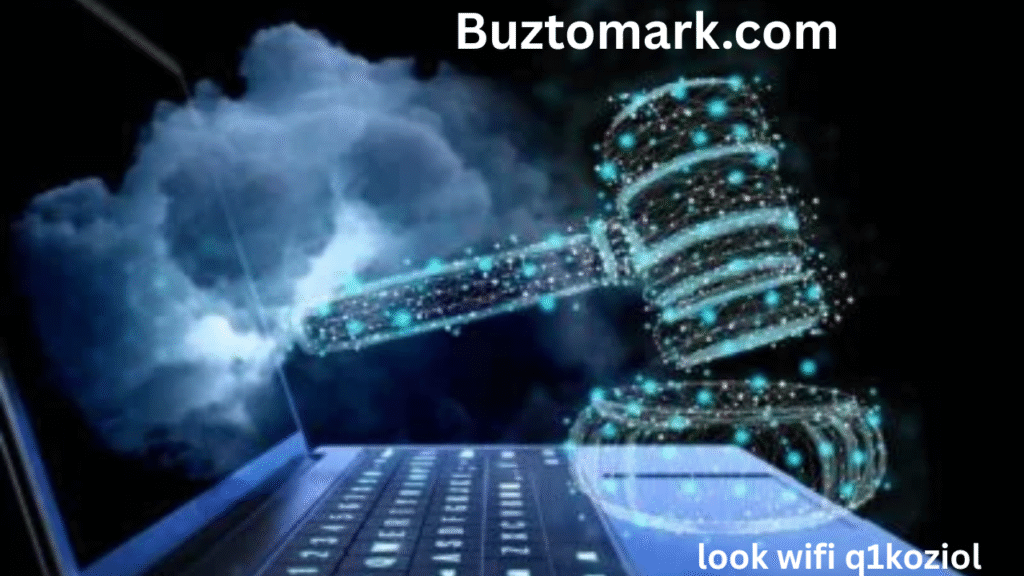Exploring the Mystery of Look WiFi Q1koziol – What It Means, How It Works, and Why It Matters??

In today’s interconnected world, certain unusual terms capture people’s attention—one of them being look wifi q1koziol. While it may sound like a random combination of words, this phrase has drawn curiosity from those interested in networking, technology, and even code naming conventions. The mix of “look wifi” suggests something related to wireless internet connectivity, while “q1koziol” appears like a code, product ID, or unique device identifier. This combination makes the term both mysterious and intriguing.
The big question is—what exactly could look wifi q1koziol represent? Is it a name for a WiFi network, a security protocol, a testing code, or something entirely different?
Breaking Down the Term – Look WiFi Q1koziol

The phrase can be interpreted in parts:
- Look WiFi – This implies checking, identifying, or scanning for WiFi networks. It could refer to a command, tool, or a suggestion to search for a wireless connection.
- Q1koziol – This appears to be a unique identifier. It could be a username, device label, batch code, or a cryptic internal term used by developers or testers.
When combined, look wifi q1koziol might mean “search for the WiFi network named Q1koziol” or “examine a WiFi setting with the code Q1koziol.”
Possible Technical Interpretations??

From a technical perspective, there are several ways to understand look wifi q1koziol:
- WiFi Network Name (SSID) – It could be the exact name of a wireless network. Sometimes developers set unusual names for testing or to keep networks private.
- Diagnostic Command – In networking, “look” could represent a scanning command, and Q1koziol might be the device or access point being scanned.
- IoT Device Identifier – Many IoT devices broadcast WiFi under coded names during setup. Q1koziol could be the default identifier before customization.
- Firmware or Test Build Tag – In software development, internal firmware versions often have odd code names, and look wifi q1koziol could represent one such build.
Why Look WiFi Q1koziol Sparks Curiosity

The human brain naturally reacts to unusual combinations of words and letters. Seeing something like look wifi q1koziol in a WiFi list, a tech forum, or a system log triggers curiosity. People might ask:
- Who set this name?
- What device is broadcasting it?
- Is it safe to connect to?
Some might see it as a harmless, quirky label, while others might suspect it’s related to a hidden device or experimental network. This mystery factor makes it memorable.
Could It Be a Hidden WiFi Network??
There is also the possibility that look wifi q1koziol could represent a hidden or semi-private network. In cybersecurity contexts, unique names are sometimes used to avoid detection or signal insider knowledge. If a person stumbles upon this network name, they might not know its purpose—but those who set it up would.
For example:
- It could belong to a private testing environment.
- It could be part of a geolocation game where players hunt for certain WiFi signals.
- It could be a disguised hotspot used for device pairing.
Look WiFi Q1koziol in the Context of User Experience
If you are a user who encounters look wifi q1koziol in your WiFi list, you might wonder whether you should connect to it. From a user experience perspective:
- If it’s open and unsecured, it’s risky to connect without knowing the source.
- If it’s password protected, you would likely need the code from the owner.
- If it disappears quickly, it might be a temporary device hotspot.
This makes the phrase more than just text—it becomes an interactive part of digital exploration.
Speculative Cultural or Brand Connection??
Outside of pure technical meaning, look wifi q1koziol could be an experimental marketing element. Companies sometimes hide coded messages in public spaces, including WiFi SSIDs, to engage people. If Q1koziol is a brand-related term, the inclusion of “look wifi” might be an invitation to connect or research further.
Security Considerations Around Look WiFi Q1koziol
If this phrase is tied to a real-world network, cybersecurity awareness is important. Connecting to unfamiliar WiFi signals can expose devices to:
- Data interception – Hackers could potentially monitor unencrypted traffic.
- Malware delivery – Certain hotspots might push malicious downloads.
- Credential theft – Login information could be stolen through phishing-style login pages.
Therefore, before engaging with anything like look wifi q1koziol, it’s wise to verify its authenticity.
The Enduring Mystery of Look WiFi Q1koziol
Ultimately, unless a developer or original source steps forward, look wifi q1koziol will remain a puzzle. It’s a perfect example of how the digital world blends technology with curiosity, sparking questions from casual users and experts alike. Whether it’s just a quirky WiFi network name, an internal project code, or a deeper technical clue, it serves as a reminder of the hidden layers in everyday tech.
Conclusion – A Phrase That Invites Discovery
The term look wifi q1koziol combines the familiar with the mysterious, the technical with the cryptic. While it may be nothing more than a network label or device code, it also invites questions, exploration, and speculation. In a way, this mystery is what makes technology exciting—behind every signal name, code, or device identifier lies a potential story waiting to be uncovered.
FAQs About Look WiFi Q1koziol?
Q1: Is look wifi q1koziol a real network?
It could be, depending on the context in which it was found. Without direct evidence, it’s mostly speculation.
Q2: Could it be related to a hidden device?
Yes, unique WiFi identifiers like this can sometimes come from IoT devices, routers, or test equipment.
Q3: Should I connect to look wifi q1koziol?
Only if you know and trust the source—unknown networks can pose security risks.
Q4: Is there any official meaning for q1koziol?
Not officially documented; it could be a code, project name, or random string.
Q5: Why do such names appear in WiFi lists?
Network names are set by device owners or manufacturers, and sometimes they use unusual strings for uniqueness or privacy.
Read More: maryjays dc, ?? – Exploring the Experience, Culture, and Community




